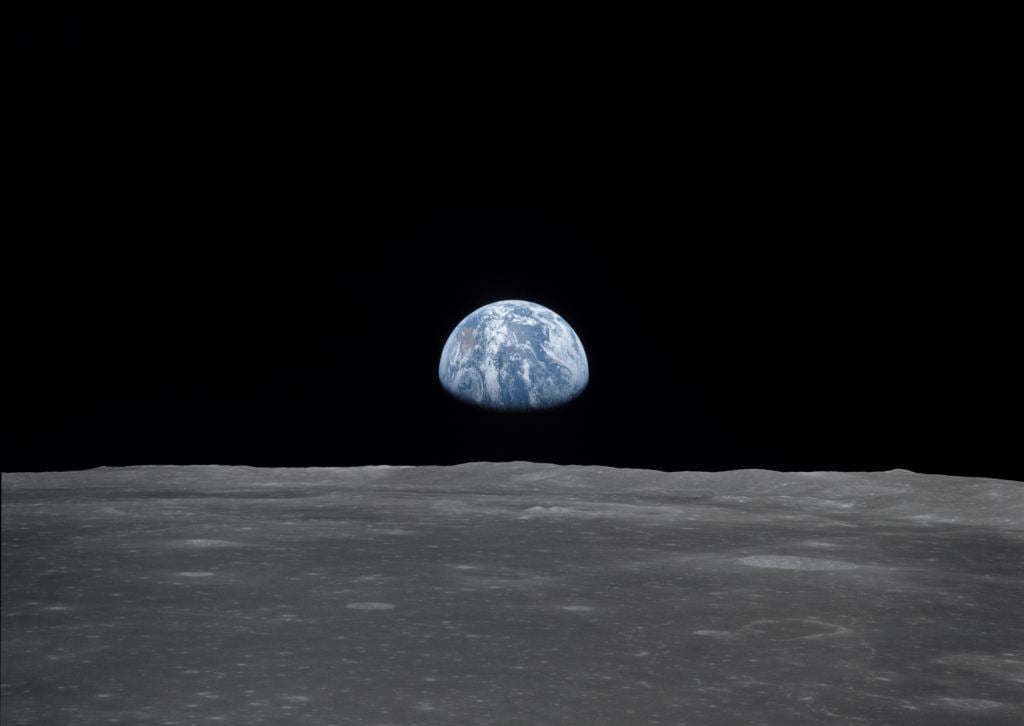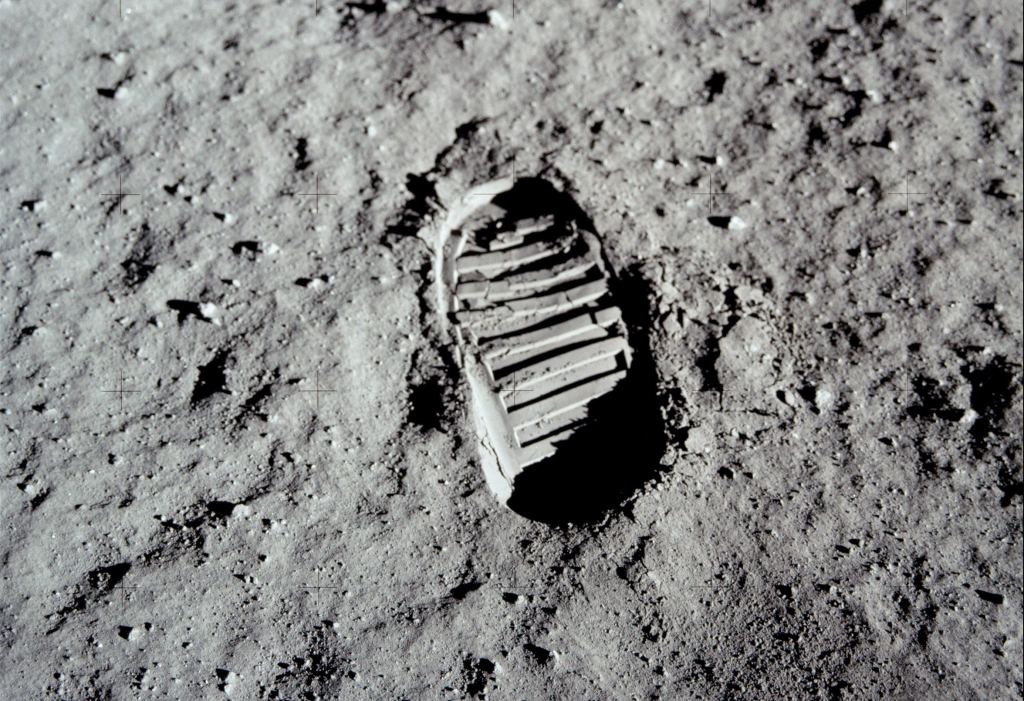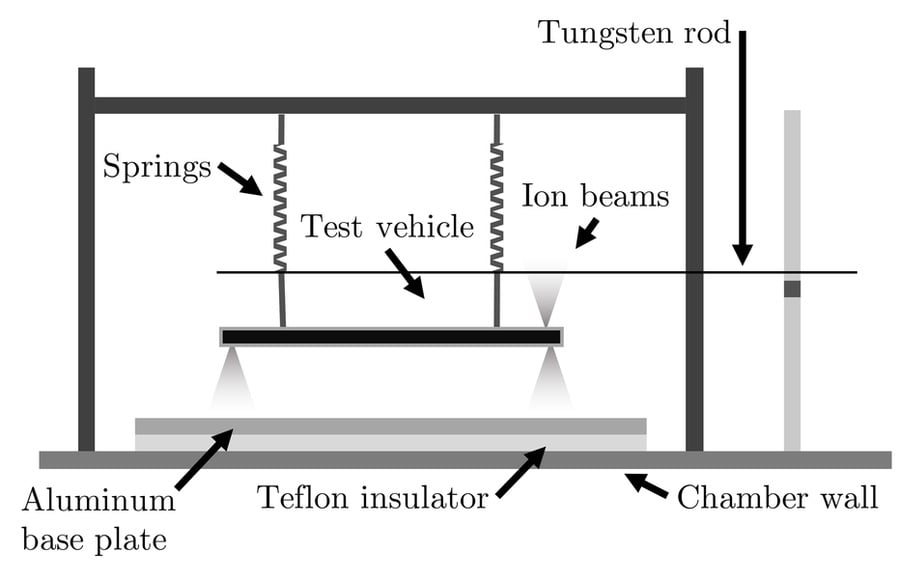Let's not sugarcoat it. Exploring the Moon is not for the faint of heart! It's an airless body, which means there is no atmosphere, the surface temperatures are extreme, and there's lots of radiation. The low gravity also means you can never really walk on the surface and have to bounce around in a bulky spacesuit until you fall over. And you can bet your bottom dollar people will make a supercut of the footage someday (see below). Then there's that awful moondust (aka. lunar regolith), which is electrostatically charged and sticks to EVERYTHING!
Looking to take advantage of this, researchers from the Massachusetts Institute of Technology (MIT) began testing a new concept for a hovering rover that harnesses the Moon's natural charge to levitate across the surface. On the Moon, this surface charge is strong enough to levitate moon dust more than 1 meter (3.3 ft) above the surface. With support from NASA, this research could lead to a new type of robotic exploration vehicle that will help astronauts explore the Moon in the coming years.
Electrostatically charged regolith is a problem on all airless rocky bodies in the Solar System, ranging from Mercury to asteroids. The lack of an atmosphere means these bodies are subject to regular bombardment from micrometeoroids and larger objects that pulverize the surface, creating fine silica dust. No atmosphere also means no wind or water erosion and that this dust is exposed to a constant stream of charged solar particles.
The team behind this concept consisted of two student researchers and one professor with the Department of Aeronautics and Astronautics at MIT (MIT AeroAstro). Along with engineers from NASA, the team investigated how a lunar glider made of Mylar could take advantage of the Moon's natural surface charge. Their research is summarized in a paper that recently appeared in the *Journal of Spacecraft and Rockets* (JSR).
Much like how a MagLev train relies on magnetic induction between the train cars and the tracks to travel at very fast speeds, this Mylar glider naturally holds the same charge as surfaces on airless bodies. This creates a repelling effect between the two similarly-charged surfaces that will keep the glider aloft as it explores airless celestial bodies. According to previous NASA studies, Mylar gliders could explore small asteroids, but not planets or Moons (due to their stronger gravitational pull).
The MIT team's concept is designed to get around this size limitation by equipping a disc-shaped Mylar glider (that resembles a flying saucer) with tiny ion thrusters - known as ionic-liquid ion sources. These consist of microfabricated nozzles connected to reservoirs containing room temperature molten salt (an ionic liquid). When a small voltage is applied, these salt's ions become charged and are emitted as a tight beam through the nozzles.
This is similar in concept to Hall-Effect propulsion (aka. ion engines), where an inert gas like Xenon is exposed to electromagnetic fields to charge its particles, which are then magnetically focused through a nozzle to generate thrust. In this case, the overall effect is to charge up the vehicle and the surface's natural charge to generate a stronger repulsive force that would allow the vehicle to operate in environments with higher gravity (using little energy).
Oliver Jia-Richards, a graduate student at MIT AeroAstro, was the lead author on the study. As he said in a recent MIT News statement:
“We think of using this like the Hayabusa missions that were launched by the Japanese space agency. That spacecraft operated around a small asteroid and deployed small rovers to its surface. Similarly, we think a future mission could send out small hovering rovers to explore the surface of the moon and other asteroids.”
In an initial feasibility study, Prof. Lozano and this colleagues showed that the ion boost would be strong enough to levitate a vehicle weighing about 1 kg (2 lbs) on a large asteroid like 16 Psyche and the Moon. To test the idea, the team modeled a disk-shaped rover with ion thrusters on the lunar surface, then considered how the negatively-charged ion beams would affect the vehicle by itself. According to their results, the vehicle would become positively charged (similar to the Moon's surface), but found that this was not enough to get the vehicle off the ground.
The team then considered transferring the glider's charge to the lunar surface to supplement its natural charge. To test the concept, the team drew up a simple mathematical model that considered how additional thrusters aimed at the ground would bolster the rover's levitation. As a final step, they built a small hexagonal test vehicle in Lozano's lab that weighed about 60 grams (2 ounces) and was equipped with two ion thrusters (one pointed up and one down).
The vehicle was suspended over an aluminum surface equipped with two springs calibrated to compensate for Earth's gravity and a tungsten rod to measure how much force the thrusters produced when fired. The entire setup was then placed within a vacuum chamber to simulate an airless environment, and the team applied various voltages to the thrusters to calculate the height the vehicle could achieve.
The model and experimental results were consistent and showed that a 1 kg (2 lbs) rover with a 10-kilovolt ion source would be able to levitate one centimeter from the surface on a large asteroid such as Psyche and the Moon, with a 50-kilovolt source. More power could mean increased altitudes, but Lozano indicated that additional research and revised modeling are needed before anything can be said definitively.
But suppose a simple increase in voltage would allow for greater levitation. In that case, the team believes that future missions to the Moon and asteroids could benefit from rovers that use ion thrusters to safely hover and maneuver over unknown (and potentially hazardous) terrain. As Lozano concluded:
“This kind of ionic design uses very little power to generate a lot of voltage. The power needed is so small, you could do this almost for free. In principle, with better modeling, we could levitate to much higher heights. With a levitating rover, you don’t have to worry about wheels or moving parts. "An asteroid’s terrain could be totally uneven, and as long as you had a controlled mechanism to keep your rover floating, then you could go over very rough, unexplored terrain, without having to dodge the asteroid physically.”
Further Reading: MIT News, JRS
 Universe Today
Universe Today



